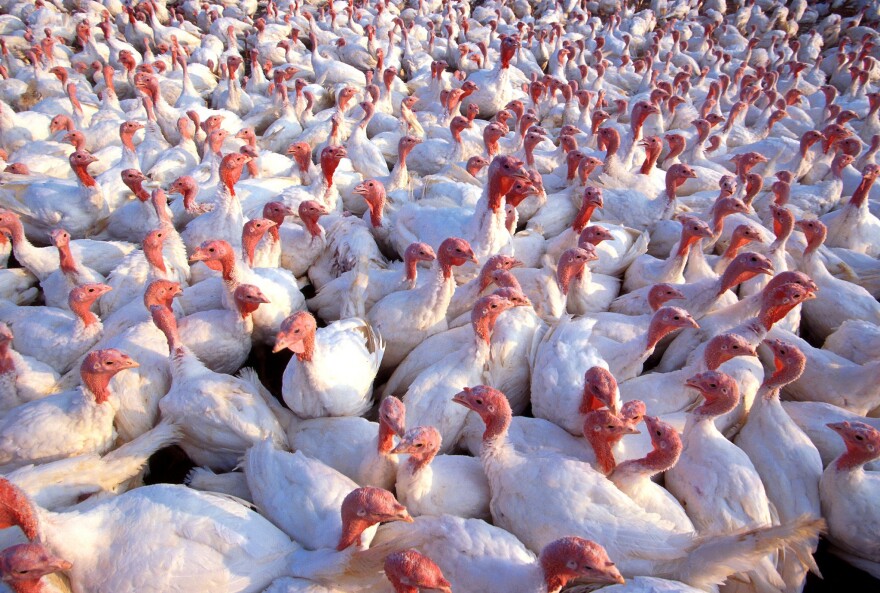The final avian flu quarantine has been lifted in Dubois County, where an outbreak earlier this year led to the loss of more than 400,000 birds.
The outbreak affected 10 turkey farms, all of which were identified within a 24-hour period. The State Board of Animal Health quickly quarantined the farms and restricted the moving of poultry or poultry products in and out of the farms.
The bird flu didn’t affect any more farms, and now Indiana can declare itself “officially free of bird flu.” The lifting of the quarantine means the county has gone 90 days with no new cases of the H7N8 strain of the virus.
The quick containment of the virus stands in stark comparison to an outbreak of avian flu in 2015, which led to the death of 50 million birds across 21 different states, either through illness or population control measures.
State Board of Animal Health spokeswoman Denise Derrer says speed was the biggest factor in the state’s success. “The main different approach we took is we took care of it very quickly and rapidly,” Derrer says.
Derrer also mentions the Board of Animal Health saved some time using low-level offenders from the Indiana Department of Corrections to help contain the outbreak instead of working with out-of-state contractors.
Purdue professor of comparative pathobiology Suresh Mittal says the 2015 outbreak was fresh in the minds of control experts and farmers in Indiana, which kept people from getting complacent.
“When something is not happening for a while, all these preventative measure which are supposed to be there, people just take it lightly and don’t enforce it strongly,” he says.
Derrer agrees with Mittal. “All it takes is something very small, an action that doesn’t give much thought, to introduce the disease from one farm to another,” she says.
Avian flu can be spread between farms through actions as simple and disparate as not thoroughly washing boots in disinfectant or accidentally letting a wild bird into a barn.
The USDA’s TJ Myers oversees the Animal and Plant Health Inspection Service unit that helped control the Dubois County Outbreak. He says after 2015, the agency created new guidelines for responses to outbreaks:
“2015 was a real lessons-learned kind of experience, and we tried to capture a lot of that,” he says. “Improved biosecurity, improved preparedness, more rapid response times…we put those lessons to use in the outbreak in Indiana.”
New guidelines included what the USDA euphemistically refers to as “more rapid depopulation efforts” and improving communication among state and federal governments, producers and consumers.
Mittal adds the flu is likely carried by migrating birds. He says the fact the outbreak occurred in a non-migratory season could have also been a factor in the containment of the virus.





